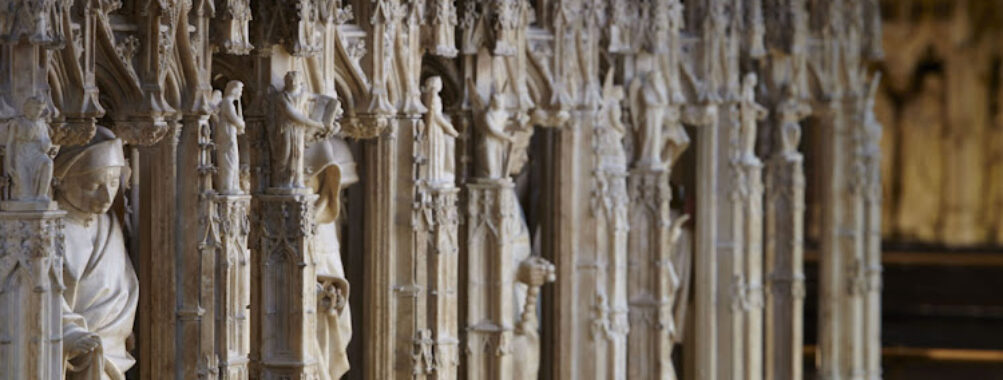
Museum of Fine Arts Dijon
Table of Contents
Description
The Museum of Fine Arts in Dijon is more than just a place to admire paintings on the wall—it’s a journey through centuries of European history, tucked inside the grand former palace of the Dukes of Burgundy. Opened in 1787, this museum is one of the oldest in France, and you can feel that weight of history as soon as you step into its echoing halls. The palace itself is a masterpiece, with Gothic flourishes and Renaissance touches that make you want to pause and stare before you even get to the art.
Inside, the collection spans from Antiquity to the 19th century, with a strong focus on Western art. You’ll find medieval altarpieces, Renaissance portraits, and 19th-century French works that tell their own stories about changing tastes and politics. The tombs of the Dukes of Burgundy are the show-stoppers for many visitors. They’re massive, ornate, and strangely moving—like a reminder that power and glory always end up as stone and memory. But the museum isn’t just about grandeur; it also has quieter corners where lesser-known artists shine, and those are often the spots where you feel like you’ve stumbled across something personal and unexpected.
Most travelers walk away impressed. The sheer scale of the collection and the way it’s housed inside a palace gives it a one-of-a-kind atmosphere. Still, it’s not perfect—some people find the layout a bit confusing, and like many historic buildings, it can feel a little overwhelming if you’re not in the mood for a deep dive into art history. But if you take your time and let yourself wander, it’s an experience that feels both grand and intimate at the same time.
Key Features
- Located in the former palace of the Dukes of Burgundy, blending art and architecture in one experience
- Collections covering Antiquity through the 19th century, with a strong emphasis on Western art
- Famous tombs of the Dukes of Burgundy, masterpieces of Gothic sculpture
- Free entry to the permanent collections, making it accessible for all travelers
- Wheelchair-accessible entrances, restrooms, and parking, plus assistive hearing loops
- Onsite amenities including a restaurant and restrooms
- Family-friendly environment, with plenty of space for children to explore
Best Time to Visit
Timing makes a big difference here. If you visit between June and September, the museum extends its hours slightly, which gives you more flexibility if you’re squeezing it into a packed itinerary. Early mornings tend to be the quietest, especially on weekdays, and that’s when you can really enjoy the palace atmosphere without the buzz of big groups around you. Winters in Dijon can be chilly, but the museum is a warm refuge, and honestly, wandering through centuries of art while it’s cold outside feels like a treat. Just keep in mind the museum closes on Tuesdays and certain French holidays, so plan around that.
Personally, I’d say autumn is the sweet spot—fewer tourists, cooler weather, and Dijon itself feels calmer. After a long morning inside the museum, you can step outside and find a café nearby for a glass of Burgundy wine, which somehow makes the whole experience feel complete.
How to Get There
Dijon is well connected by train, especially from Paris, Lyon, and other major French cities. The museum sits right in the historic city center, so once you’re in Dijon, it’s an easy walk from most central hotels. If you’re coming by car, there are parking facilities nearby, though driving in the old center can be a bit of a puzzle with its narrow streets and one-way systems. Buses and trams also stop close to the museum, making public transport a convenient option.
For me, walking is the best way to arrive. Dijon’s historic center is compact, and strolling through its streets with half-timbered houses and little shops makes the approach to the museum feel like part of the adventure. You get that sense of anticipation, and then suddenly you’re standing in front of the palace—it’s a moment worth savoring.
Tips for Visiting
If you’re planning a trip, here are a few things to keep in mind:
- Give yourself time: The museum is big—bigger than you might expect. Plan at least two hours, though you could easily spend half a day if you’re really into art.
- Start with the tombs: They’re the highlight for many, and seeing them early sets the tone for the rest of your visit.
- Bring a sweater: Some rooms can feel a bit cool, especially in winter months.
- Use the amenities: There’s a restaurant onsite, which is handy if you want to break up your visit with a meal rather than rushing through.
- Check the schedule: Temporary exhibitions change regularly, and they’re often worth the extra time.
- Don’t rush the details: Some of the smaller works tucked away in side rooms are the ones that stick with you. Take a moment to linger.
One last personal note: I remember wandering into a quiet gallery filled with 18th-century portraits, and for a few minutes, I was completely alone. The silence, the creak of the wooden floor, the painted eyes following me—it was eerie but in the best way. That’s the kind of memory no guidebook can prepare you for, and it’s why I think the Museum of Fine Arts Dijon deserves a spot on any traveler’s list. You don’t just see art here—you feel the centuries layered around you.
Location
Places to Stay Near Museum of Fine Arts Dijon
Find and Book a Tour
Explore More Travel Guides
No reviews found! Be the first to review!